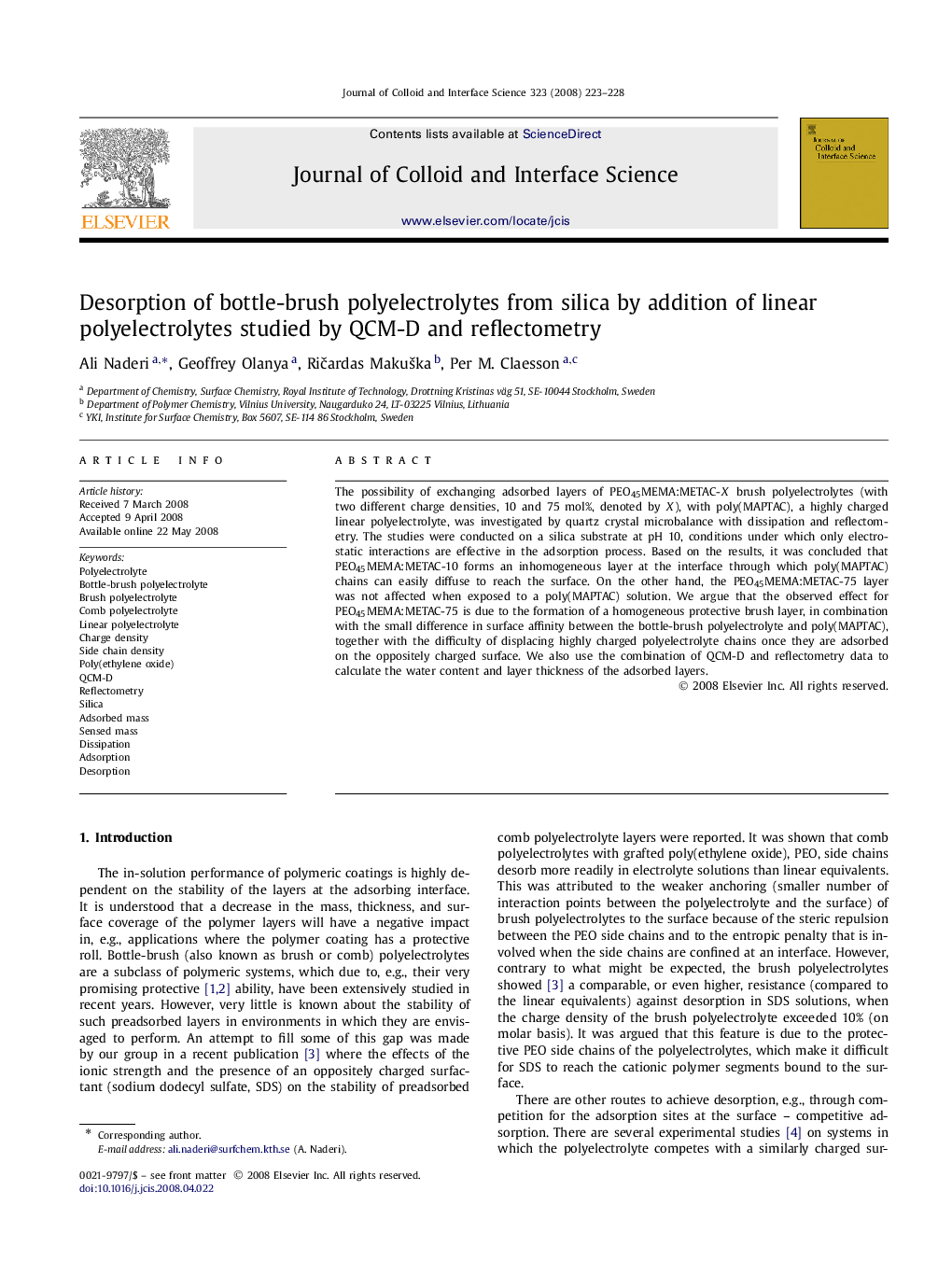| Article ID | Journal | Published Year | Pages | File Type |
|---|---|---|---|---|
| 611411 | Journal of Colloid and Interface Science | 2008 | 6 Pages |
The possibility of exchanging adsorbed layers of PEO45MEMA:METAC-X brush polyelectrolytes (with two different charge densities, 10 and 75 mol%, denoted by X), with poly(MAPTAC), a highly charged linear polyelectrolyte, was investigated by quartz crystal microbalance with dissipation and reflectometry. The studies were conducted on a silica substrate at pH 10, conditions under which only electrostatic interactions are effective in the adsorption process. Based on the results, it was concluded that PEO45MEMA:METAC-10 forms an inhomogeneous layer at the interface through which poly(MAPTAC) chains can easily diffuse to reach the surface. On the other hand, the PEO45MEMA:METAC-75 layer was not affected when exposed to a poly(MAPTAC) solution. We argue that the observed effect for PEO45MEMA:METAC-75 is due to the formation of a homogeneous protective brush layer, in combination with the small difference in surface affinity between the bottle-brush polyelectrolyte and poly(MAPTAC), together with the difficulty of displacing highly charged polyelectrolyte chains once they are adsorbed on the oppositely charged surface. We also use the combination of QCM-D and reflectometry data to calculate the water content and layer thickness of the adsorbed layers.
Graphical abstractDesorption of bottle-brush polyelectrolytes from silica by addition of linear polyelectrolyte.Figure optionsDownload full-size imageDownload as PowerPoint slide
